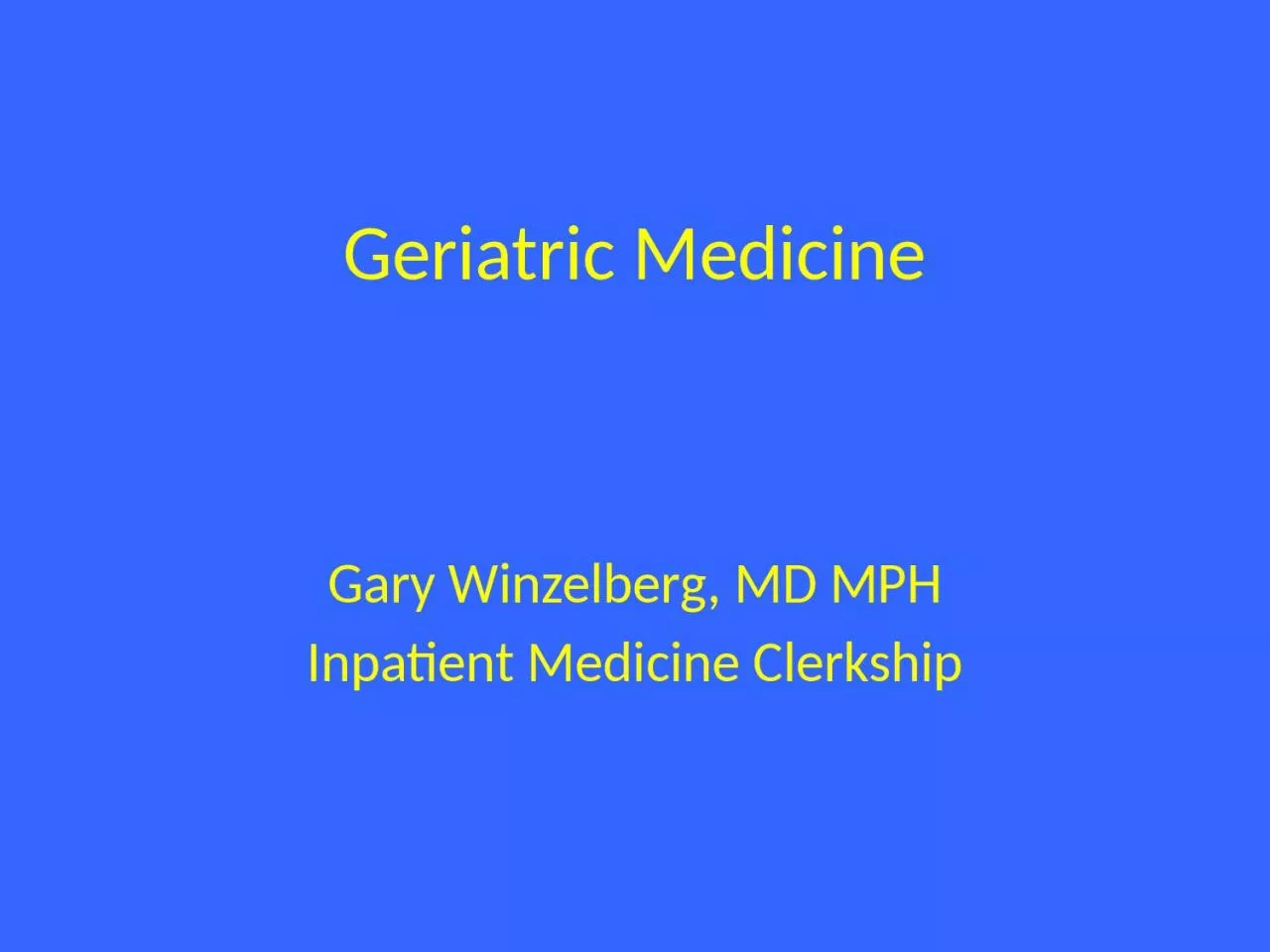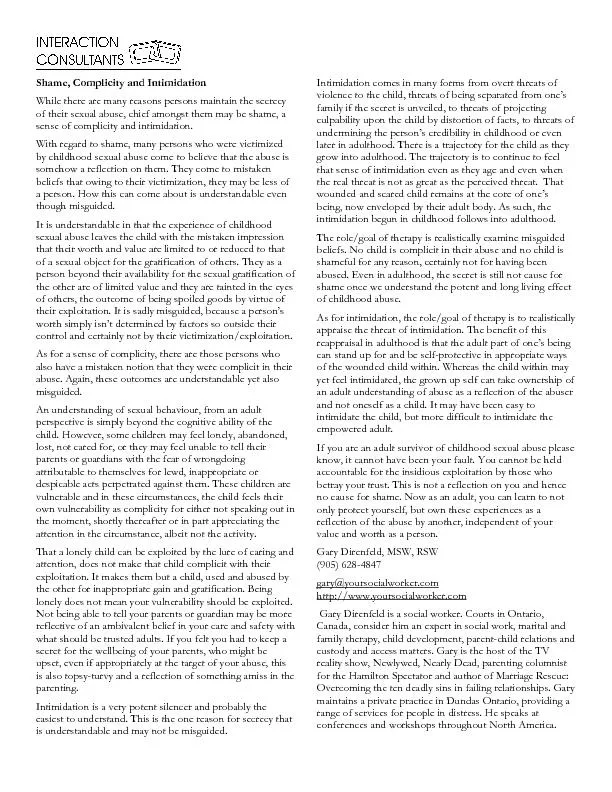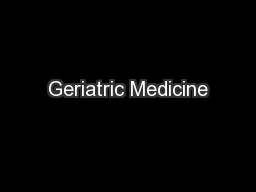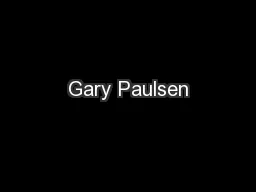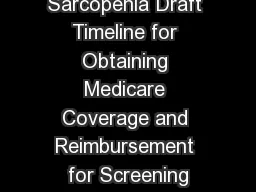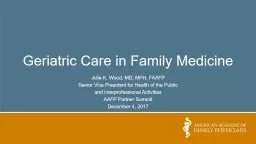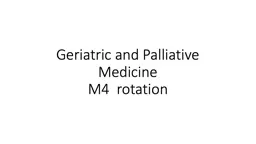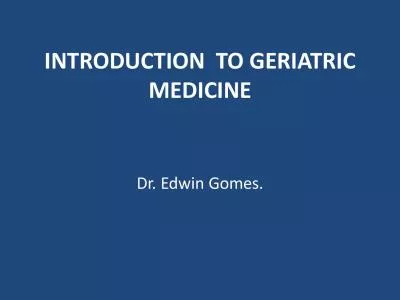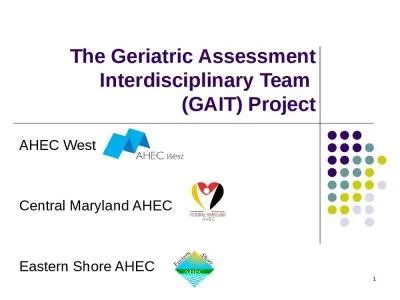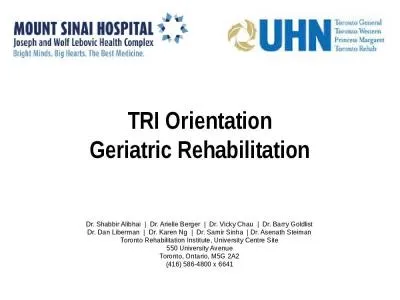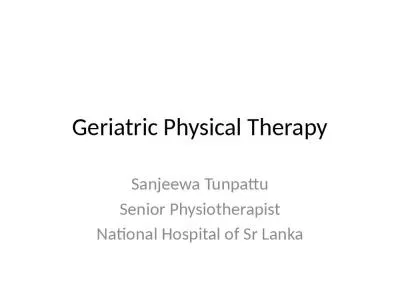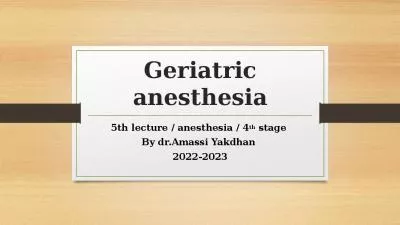PPT-Geriatric Medicine Gary Winzelberg, MD MPH
Author : isabella | Published Date : 2022-06-15
Inpatient Medicine Clerkship Ms IM 87 yo woman Holocaust survivor Positive cardiac stress test elective catheterization no intervention Premeds diphenhydramine
Presentation Embed Code
Download Presentation
Download Presentation The PPT/PDF document "Geriatric Medicine Gary Winzelberg, MD M..." is the property of its rightful owner. Permission is granted to download and print the materials on this website for personal, non-commercial use only, and to display it on your personal computer provided you do not modify the materials and that you retain all copyright notices contained in the materials. By downloading content from our website, you accept the terms of this agreement.
Geriatric Medicine Gary Winzelberg, MD MPH: Transcript
Download Rules Of Document
"Geriatric Medicine Gary Winzelberg, MD MPH"The content belongs to its owner. You may download and print it for personal use, without modification, and keep all copyright notices. By downloading, you agree to these terms.
Related Documents

